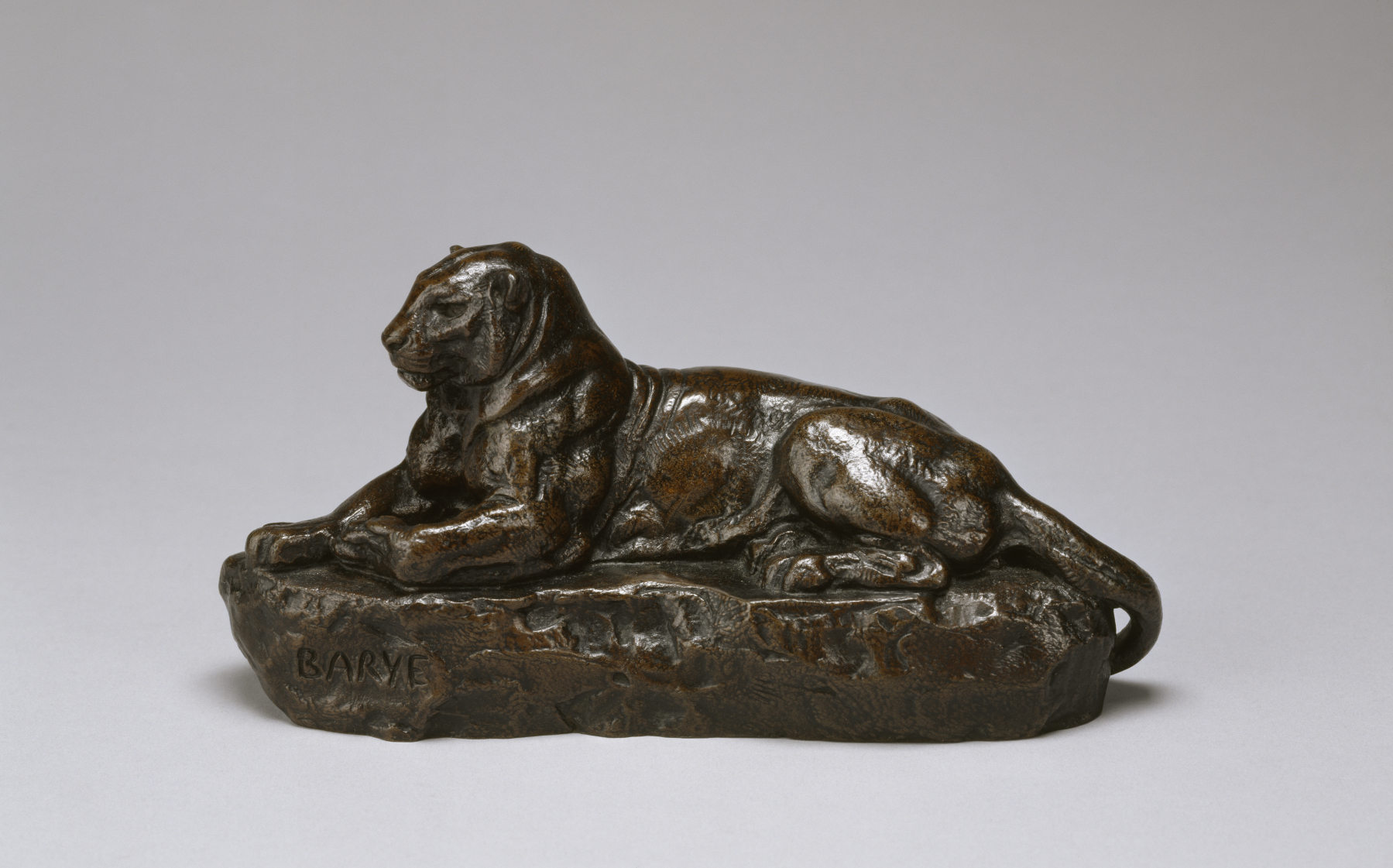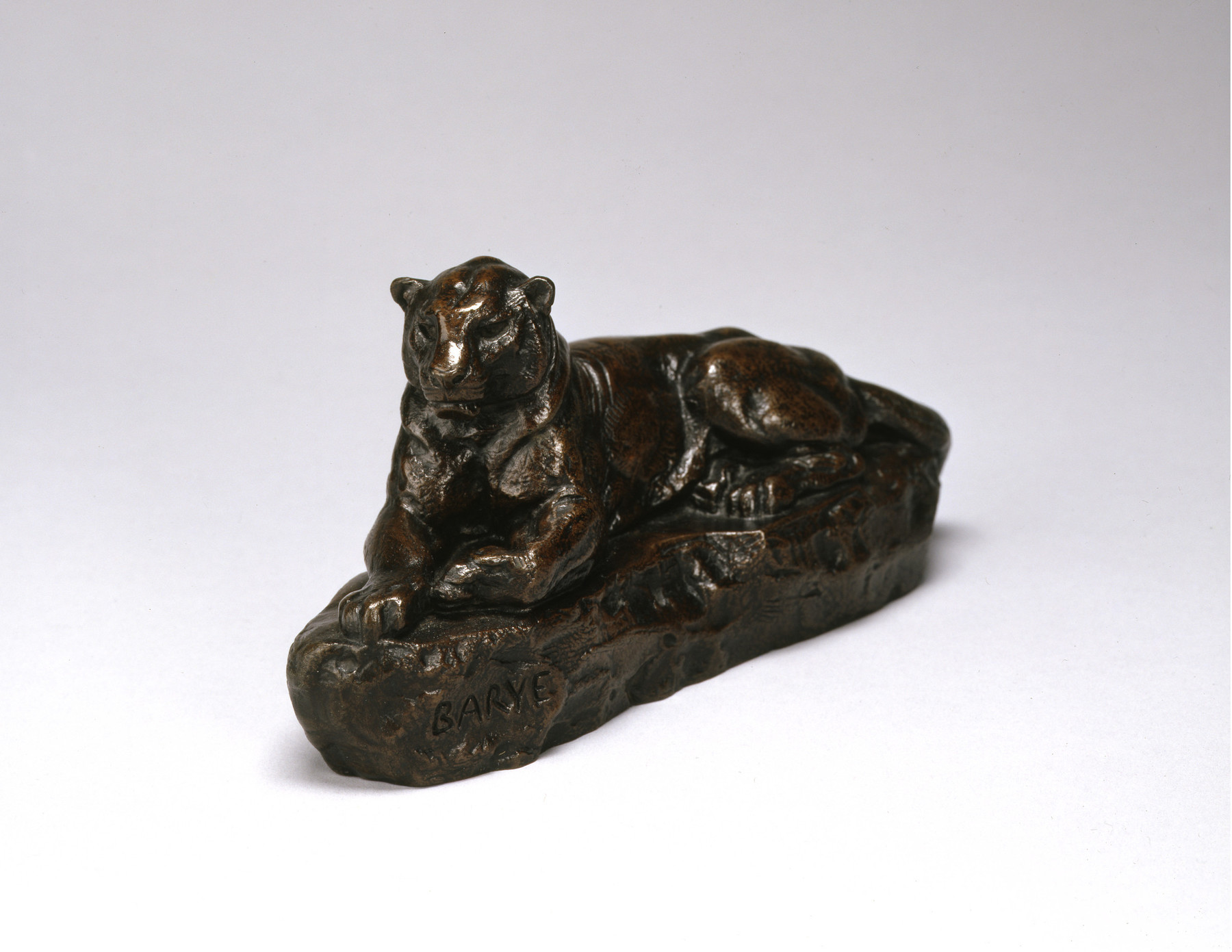Panther of India, No. 2
(18th and 19th Centuries )
A majestic panther is posed reclining. The plaster model (Walters 27.46) is coated with wax in which the artist has incised details of the surface as well as his signature. The Walters' early records mistakenly listed this sculpture as Panther of Tunis. Barye issued two panthers as companion pieces in 1857 and again in 1860. The later casts are larger and were known as Panther of India, No. 1, and Panther of Tunis, No. 1.
Inscription
Provenance
Provenance (from the French provenir, 'to come from/forth') is the chronology of the ownership, custody, or location of a historical object. Learn more about provenance at the Walters.
William T. Walters, Baltimore [date and mode of acquisition unknown]; Henry Walters, Baltimore, 1894, by inheritance; Walters Art Museum, 1931, by bequest.
Exhibitions
| 2007-2008 | Untamed: The Art of Antoine-Louis Barye. The Walters Art Museum, Baltimore; Philbrook Museum of Art, Tulsa; The Henry Morrison Flagler Museum, Palm Beach. |
| 1995 | The Allure of Bronze. The Walters Art Gallery, Baltimore. |
| 1889-1890 | The Works of Antoine-Louis Barye. American Art Gallery (New York), New York. |
Conservation
| Date | Description | Narrative |
|---|---|---|
| 1/1/1995 | Treatment | cleaned |
| 3/5/2002 | Treatment | cleaned |
| 4/26/2005 | Technical Report | X-ray fluorescence |
Geographies
France, Paris (Place of Origin)
Measurements
3 7/8 x 8 x 2 5/8 in. (9.8 x 20.3 x 6.7 cm)
Credit Line
Acquired by William T. Walters
Location in Museum
Not on view
Accession Number
In libraries, galleries, museums, and archives, an accession number is a unique identifier assigned to each object in the collection.
In libraries, galleries, museums, and archives, an accession number is a unique identifier assigned to each object in the collection.
27.44




